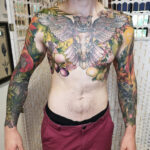When diving into the world of tattoos, you’ll quickly encounter a unique vocabulary. From understanding tattoo styles to deciphering artist jargon, it can feel like learning a new language. One term you’re bound to hear is “flash.” But what exactly is tattoo flash, and how does it relate to getting your own Design Drawing Tattoo?
In this guide, we’ll break down the concept of tattoo flash with insights from experienced tattoo artists. We’ll explore what flash means, the different ways it’s used, and why it might be the perfect option for your next piece of ink.
Deciphering Flash: What Exactly is Tattoo Flash?
To understand flash, we asked tattoo artists Andrea @nolseytattoo and Lauren Hepple @lh.tattoo to share their expertise.
“There’s no definitive answer,” Andrea, a Brighton-based artist, explains. “But traditionally, flash refers to pre-designed tattoos that clients choose from. These designs are often displayed as prints in the studio or in portfolios.” This traditional flash is designed to be repeatable, meaning the same design can be tattooed multiple times on different people.
Lauren Hepple, owner of String of Hearts in Southsea, adds, “Flash designs are pre-drawn illustrations ready to be booked as they are shown. When I release flash, it usually revolves around a specific theme or style I’m focused on at that time.”
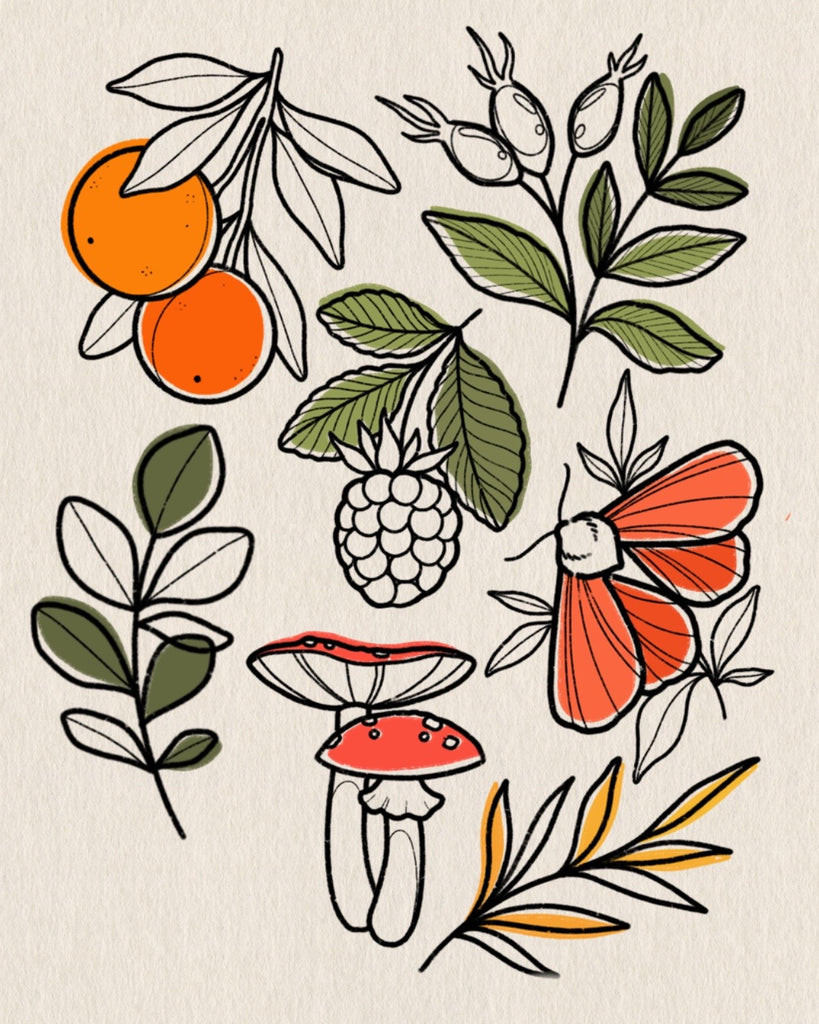 Repeatable tattoo flash designs displayed on a sheet, showcasing various styles and themes.
Repeatable tattoo flash designs displayed on a sheet, showcasing various styles and themes.
One-of-a-Kind Flash vs. Repeatable Designs
While traditional flash is repeatable, modern tattoo artists are also exploring unique approaches to this concept. Andrea shares her personal take: “Currently, most of my flash designs are one-of-a-kind. I genuinely enjoy tattooing a design and then letting it go. I like to say ‘adopt a design,’ because that’s how it feels. They’re just fun drawings I create, and someone connects with them and takes them home forever.”
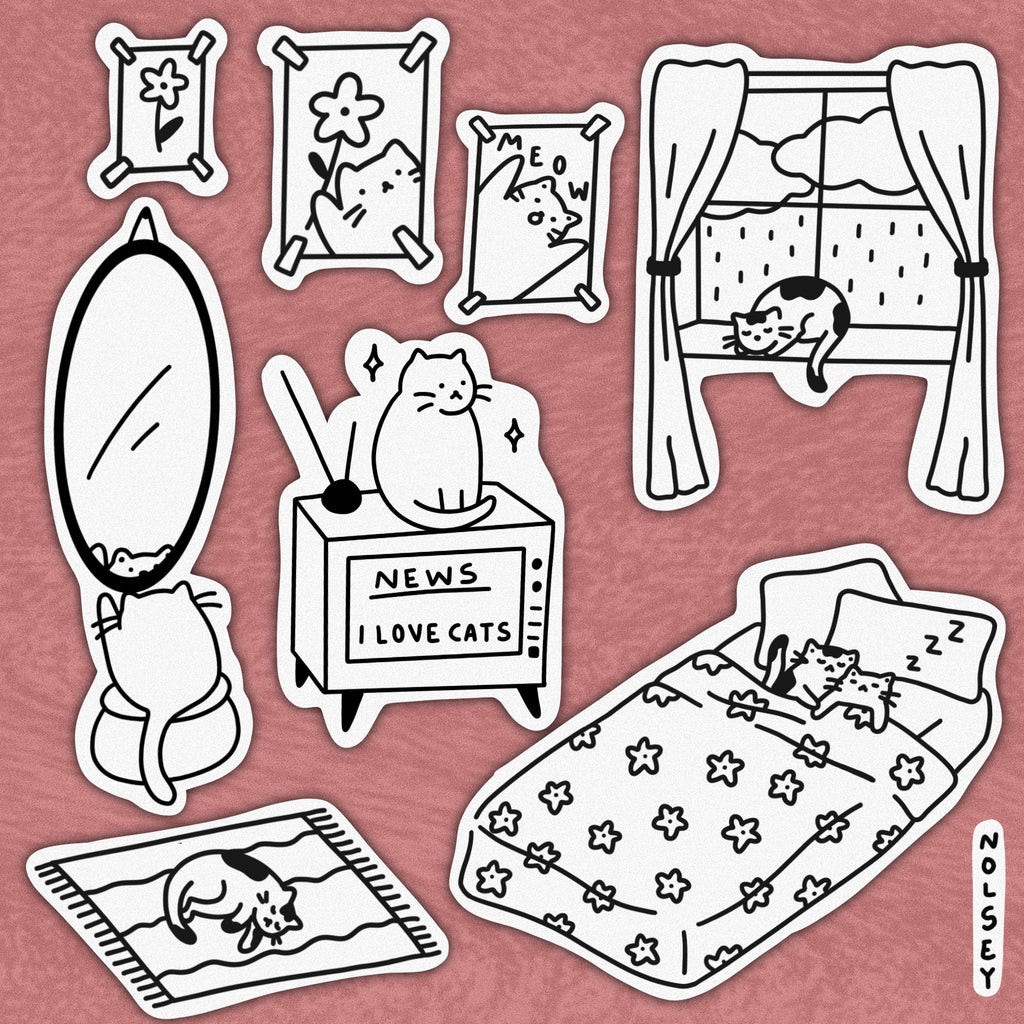 A collection of unique tattoo flash designs, showcasing illustrative and whimsical art style.
A collection of unique tattoo flash designs, showcasing illustrative and whimsical art style.
However, Andrea also creates repeatable flash: “I do have some designs that are repeatable, often inspired by traditional styles, like kewpie dolls, or simpler designs that are universally appealing – small flowers, charms, animals. These work particularly well as filler tattoos to complete larger pieces.”
Lauren notes the evolving role of flash: “For most of my tattooing career, I’ve only tattooed my designs once. But with economic shifts, offering a range of repeatable and more affordable flash became important. It’s about keeping tattoos accessible. Our industry is adapting to the current challenges artists are facing.”
The Origin of the Term “Flash”
The term “flash” itself has interesting, if somewhat uncertain, origins. Lauren explains, “There are a few stories about where ‘flash’ comes from, and it’s hard to know which is accurate.”
“One common story is that tattoo artists needed to be discreet due to social stigma or during times when tattooing was illegal, like in NYC until 1997. Artists needed to be able to quickly pack up and disappear ‘in a flash’ if necessary.” This need for speed and discretion may have contributed to the term.
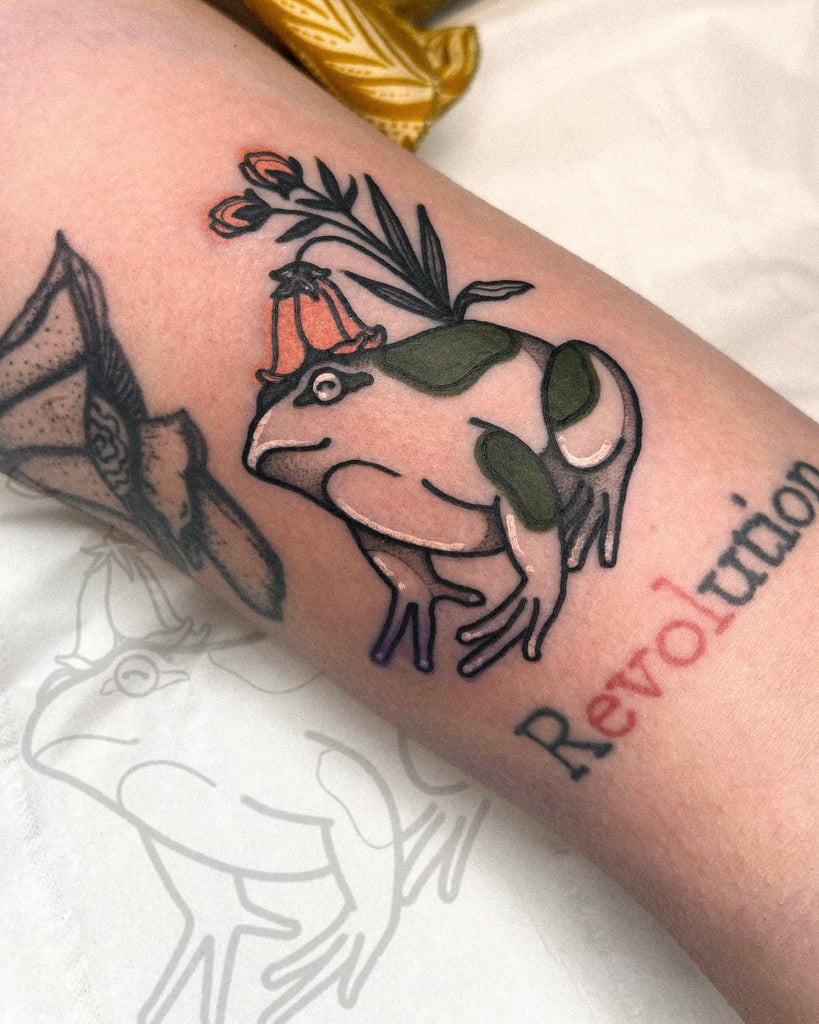 A vibrant frog tattoo, an example of a design created from tattoo flash art.
A vibrant frog tattoo, an example of a design created from tattoo flash art.
Innovative Flash: Flash Scenes and Collaborative Art
Andrea @nolseytattoo takes flash in a unique direction with her “flash scenes.” “I’ve always been passionate about illustration and wanted to merge it with tattooing. I’m heavily inspired by Where’s Wally? (Where’s Waldo?). I love those illustrations – packed with tiny details, the more you look, the more you discover. It’s exciting and colorful. So, I created my own version. You find a design you love within the scene? You can get it tattooed!”
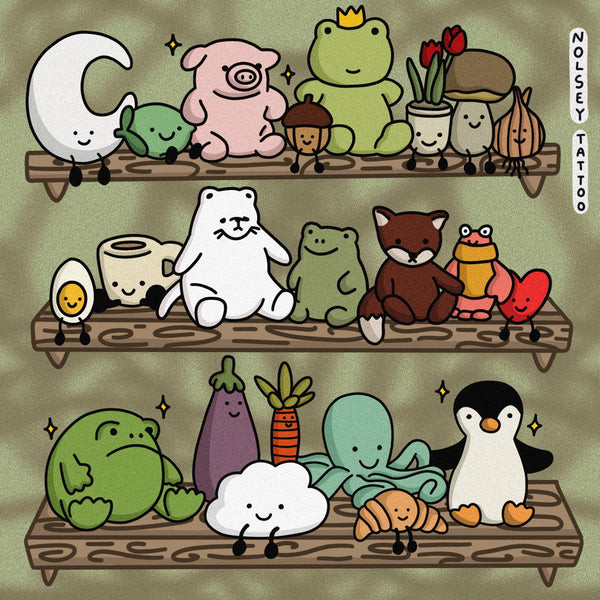 A detailed tattoo flash scene illustration, inspired by "Where's Wally?", showcasing a variety of small, individual tattoo designs within a larger composition.
A detailed tattoo flash scene illustration, inspired by "Where's Wally?", showcasing a variety of small, individual tattoo designs within a larger composition.
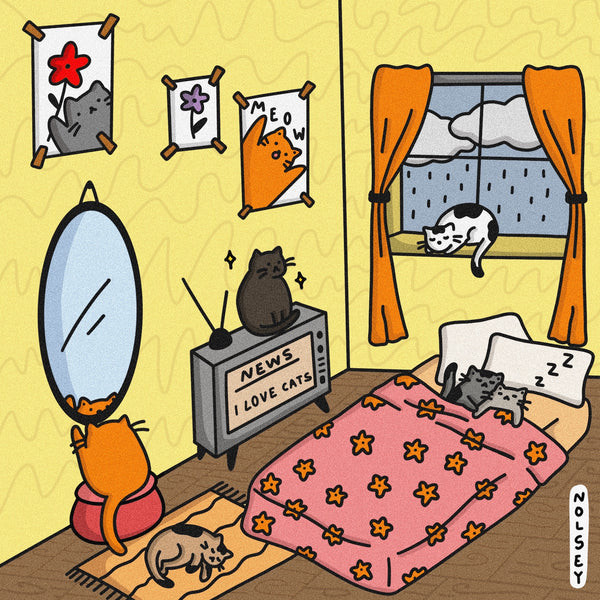 Another section of a tattoo flash scene illustration, highlighting the intricate details and diverse design elements available for selection.
Another section of a tattoo flash scene illustration, highlighting the intricate details and diverse design elements available for selection.
Navigating Tattoo Flash as a Client
When considering flash, Lauren emphasizes communication: “Always clarify with the artist how they handle their flash. Some artists repeat designs, others don’t. Some clients prefer a unique tattoo.” Don’t hesitate to contact the tattoo artist to ask questions. “Asking questions doesn’t obligate you to book.”
Andrea adds two key points for clients: “Firstly, most artists are happy to make slight modifications to a design that’s already been tattooed. If you love a design but want a small variation, don’t be afraid to ask.
“Secondly, just because a design is online or displayed as flash, it’s not free for anyone to use! It’s crucial to respect the effort and artistry that goes into creating flash designs.”
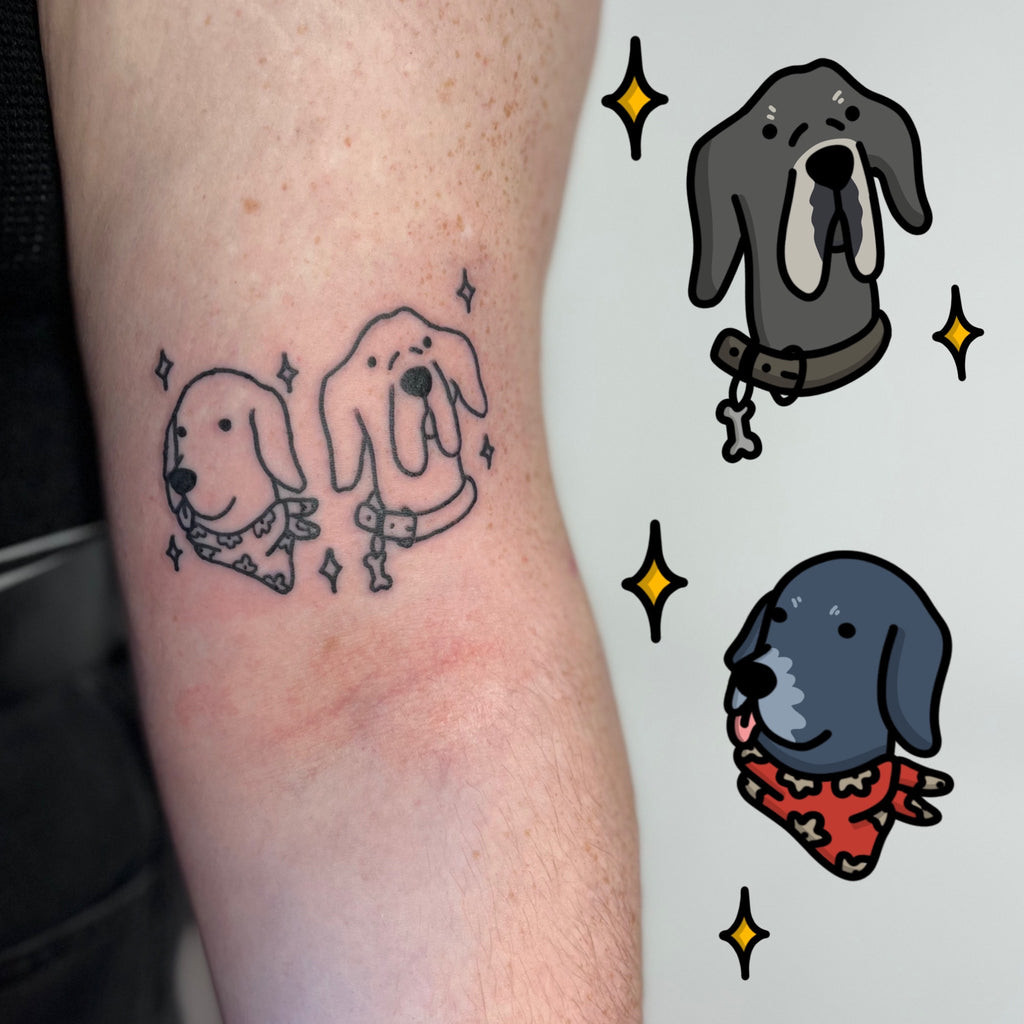 A detailed and delicate tattoo design from flash art, demonstrating the artistry and skill involved in creating flash pieces.
A detailed and delicate tattoo design from flash art, demonstrating the artistry and skill involved in creating flash pieces.
Many studios and artists also host “flash days.” These are walk-in events where clients can choose from a curated selection of flash designs at set prices, usually on a first-come, first-served basis. Some artists, like Glasgow-based Fidjit, use flash days for charitable purposes, donating proceeds to organizations like Rape Crisis Scotland.
Flash as Original Art
Lauren draws a parallel to the art world: “Choosing flash is similar to buying original artwork. It feels personal and creates a unique connection with the artist, perhaps even more so than purchasing a print. This artist connection is often what clients are seeking.”
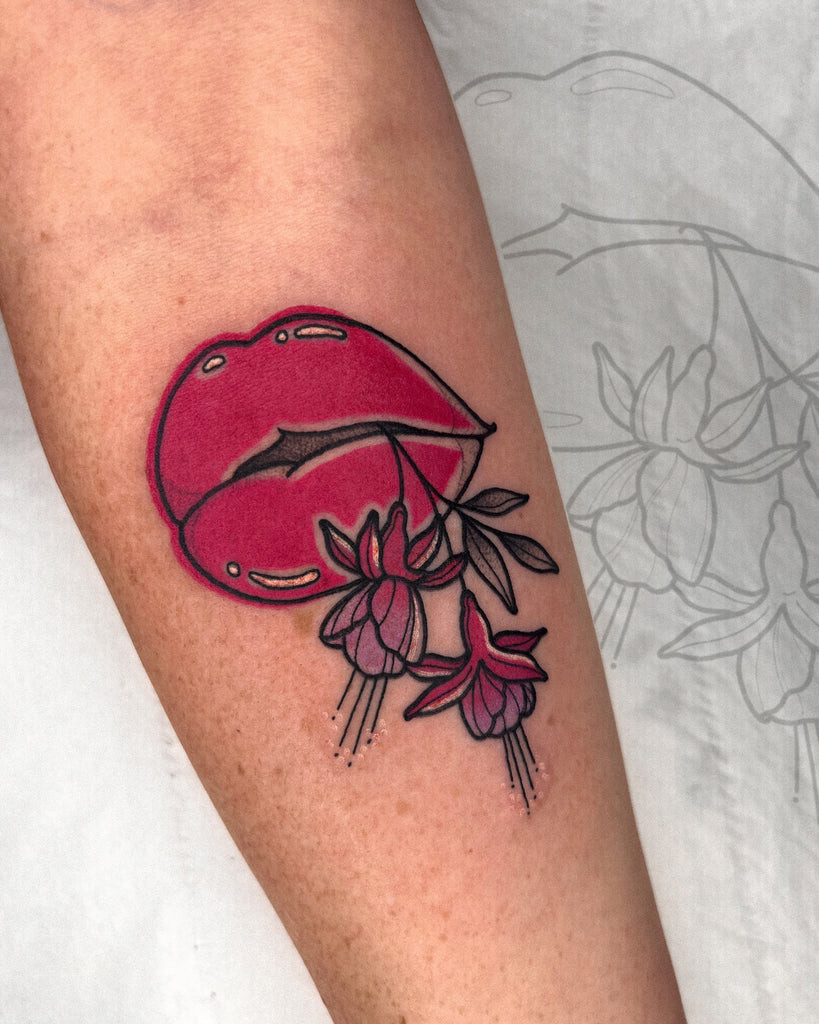 A unique tattoo design from non-repeatable flash, showcasing the personal connection and artistic value of flash art.
A unique tattoo design from non-repeatable flash, showcasing the personal connection and artistic value of flash art.
Understanding tattoo flash opens up another avenue for exploring tattoo art. Whether you’re drawn to classic repeatable designs or unique, one-off pieces, flash offers a fantastic way to connect with an artist’s style and find the perfect design drawing tattoo for you.
Read more about tattoo styles: Fine Line Tattoos: What You Need to Know
